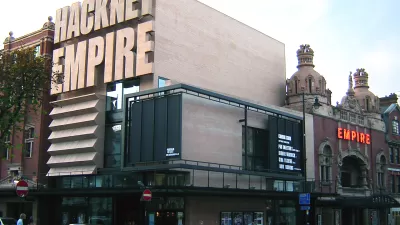With tens of thousands of unoccupied housing units on the market, the full impact of "problematic" real estate investments on the country's economy remains to be seen.
In the decade leading up the financial crisis, Spain experienced an "astonishing" real estate boom, say Suzanne Daley and Raphael Minder. Land prices rose over 500 percent and hundreds of thousands of new units were built to accommodate new immigrants and vacationers from Northern European countries. The subsequent collapse of the country's economy has spawned "ghost towns," or clusters of of unoccupied apartment buildings. There are up to 50,000 empty units near the capital city of Madrid alone, according to government estimates.
Though the Spanish government says the 12.8 percent drop in housing prices from the peak constitutes the market bottom, some speculate that prices may fall another 30 to 40 percent. Additionally, the true implications for the nation's banks are not yet clear, the authors say:
"The Bank of Spain says the banks have about $240 billion in 'problematic exposure' out of $580 billion invested in real estate and construction, a situation, they say, the banks are capable of handling. But not everyone believes that. Unlike American banks, Spanish banks have done little to open their books."
FULL STORY: Ghostly Developments Also Haunt Spain's Banks

Americans May Be Stuck — But Why?
Americans are moving a lot less than they once did, and that is a problem. While Yoni Applebaum, in his highly-publicized article Stuck, gets the reasons badly wrong, it's still important to ask: why are we moving so much less than before?

Using Old Oil and Gas Wells for Green Energy Storage
Penn State researchers have found that repurposing abandoned oil and gas wells for geothermal-assisted compressed-air energy storage can boost efficiency, reduce environmental risks, and support clean energy and job transitions.

Placekeeping: Setting a New Precedent for City Planners
How a preservation-based approach to redevelopment and urban design can prevent displacement and honor legacy communities.

San Francisco’s Muni Ridership Grew in 2024
The system saw its highest ridership since before the Covid-19 pandemic, but faces a severe budget shortage in the coming year.

Colorado Lawmakers Move to Protect BRT Funding
In the face of potential federal funding cuts, CDOT leaders reasserted their commitment to planned bus rapid transit projects.

Safe Streets Funding in Jeopardy
The Trump administration is specifically targeting bike infrastructure and other road safety projects in its funding cuts.
Urban Design for Planners 1: Software Tools
This six-course series explores essential urban design concepts using open source software and equips planners with the tools they need to participate fully in the urban design process.
Planning for Universal Design
Learn the tools for implementing Universal Design in planning regulations.
Heyer Gruel & Associates PA
City of Moreno Valley
Institute for Housing and Urban Development Studies (IHS)
City of Grandview
Harvard GSD Executive Education
Salt Lake City
NYU Wagner Graduate School of Public Service
City of Cambridge, Maryland




























